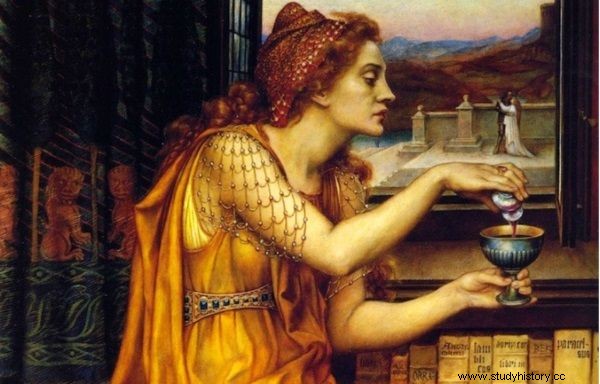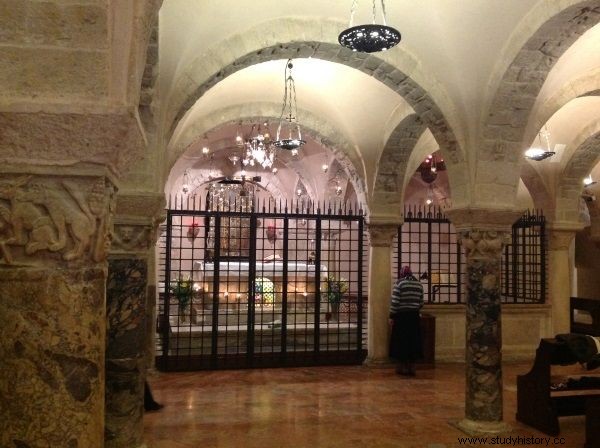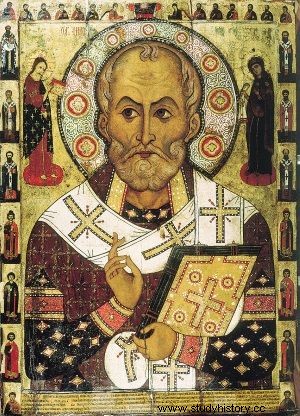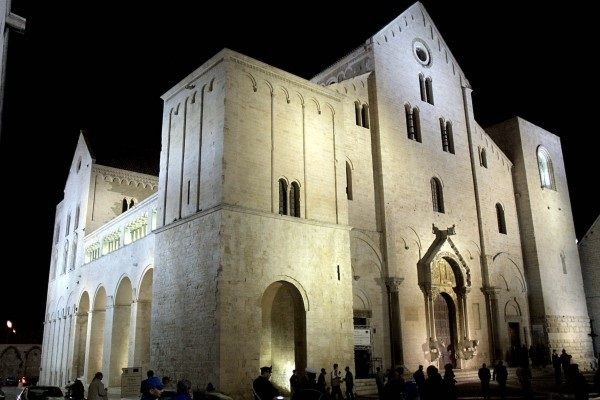He is the patron saint of children, bakers, virgins and the poor. We imagine him either as a venerable bishop or as a jovial old man in a red suit. One detail is difficult to reconcile with this image. Our favorite saint once became the protagonist of a huge criminal scandal!
Italy has been considered the home of poisoners since ancient times. More or less true stories about the exploits of Lucrezia Borgia , Catherine de Medici, or Bona Sforza they only reinforced the belief that most quarrels in Italy do not end in a duel, but a dream from which the victim has no chance to wake up.
Indeed, the services of people who can efficiently dose lethal substances were highly valued in the Apennine Peninsula. Knowledge of the effects of yew, monkshood, and arsenic helped many citizens to make large fortunes in the death trade.

The heroine of the painting, Evelyn De Morgan, might as well pour a love potion and deadly poison into a goblet ...
Such a person was undoubtedly Giulia Tofana, a peasant woman born in the 17th century near Palermo, who inherited her knowledge and specific abilities from her mother, condemned for poisoning. In addition to her talent for making toxins, Tofana also had a psychopathic personality and a keen eye for business. All these features allowed her to develop her business on a really large scale.
The enterprising woman announced that Santa Claus had revealed himself to her (yes, THAT Santa Claus exactly!) And handed over the recipe for a mysterious substance. It was supposed to have miraculous healing properties, as well as the oil flowing from the holy tomb.
A gift from a saint
In fact, the mixture had little sacredness to it. It was most likely the liquid that flowed from pig meat when arsenic was rubbed into it . Just 4 drops of this killer substance was enough to kill an adult male.
It was nothing less than the perfect poison. This was due to a simple fact:the forensic technique of the time did not allow detecting traces of arsenic in the body. What's more, the effect of Giulia's specificity resembled the symptoms of cholera - headaches and dizziness, vomiting and diarrhea ended in convulsions followed by death. And no one suspected anything.
Very quickly the "manna of Santa Claus of Bari" found its amateurs. She made a real sensation among women who wanted to punish unfaithful husbands, especially in Rome and Naples.

When his name was associated with a great criminal scandal, Saint Nicholas rested quietly in Bari, in the basilica of his name. (photo:Kamil Janicki)
The number of her victims is estimated at around 600. Characteristically, the blame for the mass extermination of unfaithful husbands was not placed on Tofana's signiory. The accusations were made primarily against ... Saint Nicholas who had died for several hundred years!
Due to the events in Italy, the sympathy for the patron saint of children decreased significantly. Meanwhile, the figure of Tofana, which fell into the hands of the Habsburg soldiers, temporarily in control of the kingdom of Naples, surprisingly rose to the rank of a symbol of resistance against the invaders seizing the Italian lands.
Poisoner or patriot?
It was only the torture given to the poisoner by the Germans that allowed her to be slightly browned. Tofana pleaded guilty to organizing a women's network of sophisticated contract murders.

I wonder what the holy bishop of Mirra would say to all this when he was accused of killing several hundred people?
Poisoned men could not count on a quick death - the woman admitted that her colleagues were able to properly dose the toxin. The victims weakened week by week, urinated mixed with blood, lost their hair ... Some unfortunates even waited for death as an escape from the torments of the flesh.
In order to avoid the anger of the Italians, the accusation was made of trying to poison all the wells in Naples, which ultimately sealed the poisoner's fate. Tofana was probably hanged in 1723. However, she did not take the prescription for "Santa's manna" with her to the grave.
Even a few decades later, the poison was used on an enormous scale. Many mysterious deaths, incl. Pope Clement XIV or Wolfgang Amadeus Mozart was explained by the action of the "gift" from Saint Nicholas.

That the Italians could not let Nicholas lie in peace in his crypt in the basement of the basilica in Bari. (public domain photo)
This caused a further decline in the popularity of the saint, who began to be looked more favorably only in the twentieth century. Fred Mitzen and Mikhail Bulgakov contributed to this independently.
The first one to present Mikołaj was a good-natured old man with a gray beard in a red costume, carrying gifts to all children. The second reminded the world of Tofana as the cunning and evil woman in The Master and Margarita. But he had no doubts that a ruthless psychopath was behind the deaths of hundreds of men. And not a saint who chooses wrongly….
